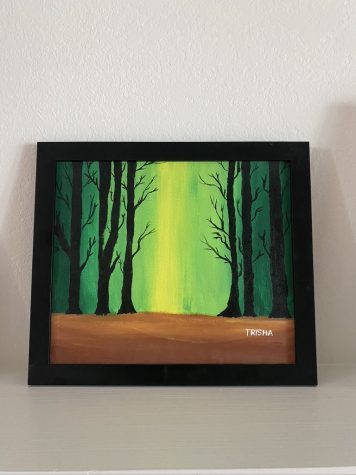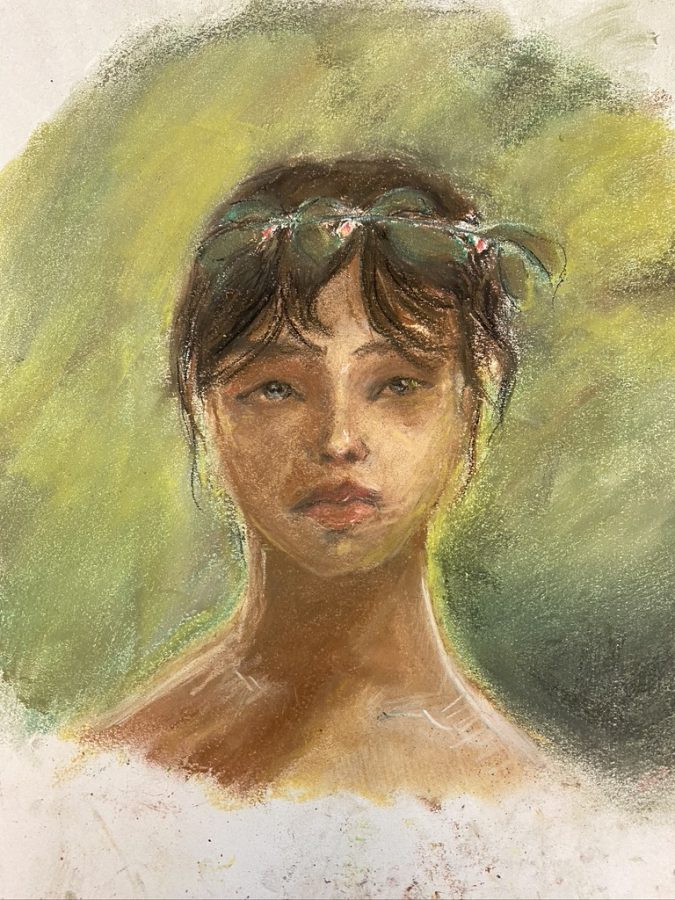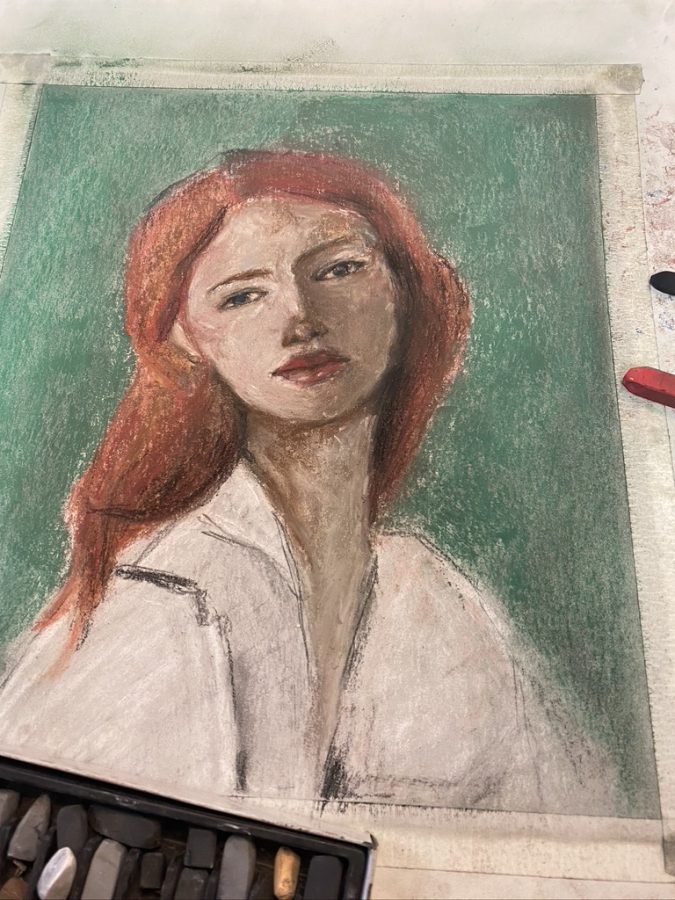“What do you want to be when you grow up?”
Exploring how my passion for art has grown over the years
A recent drawing I drew in one of my art classes
April 15, 2023
“What do you want to be when you grow up?”
“I’m not quite sure.”
As a child, I was constantly asked what I wanted to be when I grew up but never knew how to respond. My mom praised me for my artistic abilities and pushed me to pursue them further, but at the time, I only wanted to play with other kids or watch television. Despite my initial aversion, my mother signed me up for art classes to develop my skills and I created my first painting when I was seven, painting black trees obscuring an ombre background of dark green and yellow. Upon learning my artwork would be showcased in an art gallery hosted by my art class, I recognized my achievement, yet still felt no interest in being featured in the gallery — it didn’t feel important to me.
However, as I watched others admire my painting and my father taking photos of it, their looks of awe gave me a sense of pride. I couldn’t help but smile as I realized that art was something I was genuinely good, at and other people were acknowledging it too. I felt a spark of inspiration as I looked at the various paintings around me, and wondered about all the different things I could create. Suddenly, I felt a newfound appreciation for my talent, and my indifference turned into passion.
That night, I dreamed of an older version of myself selling my first painting for millions of dollars. I couldn’t help but feel a sense of exhilaration — this dream might not have been realistic, but thinking about the possibility of becoming a renowned artist filled me with a sense of purpose.

“What do you want to be when you grow up?”
With a wide grin, I enthusiastically detailed my dreams of becoming an artist. I wore paint-splattered jeans and listened to Taylor Swift as I worked. Over time, I became more obsessed with this vision of my future.
Entering high school, I noticed my peers making digs about art as a professional career and as a result, I felt more and more insecure about sharing my aspirations. I stopped picking up my sketchbook during my free time and unfollowed art accounts on social media. Eventually, I stopped attending art classes altogether. I resented the people around me who enjoyed STEM-focused hobbies but made me feel inferior for my interests.
One October night during my freshman year, I took down the drawings I once proudly hung up on the wall. My once-magical feeling of hope was gone, and I felt drained and exhausted as tears rolled down my cheeks. Every drawing I took down was an aching reminder of the end of one of the most constant things in my life, and letting go of them felt as though I was letting go of a part of myself.
I searched for hobbies that were STEM-related, such as engineering. I looked into becoming a marine biologist, chemist, environmental scientist or anything that involved computer science, and yet no subject piqued my interest the way art did. I just wanted to feel passionate again and regain my past willingness to work hard.
Now, when asked, “What do you want to be when you grow up?” I parroted what I’d heard for so long and I told them I wanted to pursue a career in STEM. Although I yearned for that to be true, it never was. I grappled with this feeling for months, until the first day of winter break, when my parents took me to the Van Gogh immersive experience in San Francisco.
I wasn’t excited to go, but as soon as I walked in, I was entranced. Van Gogh’s brushstrokes, colors and unique shapes were encapsulating, but I found myself focused on the way other people admired the painting and their expressions. I saw how my mom looked at his work the same way she used to look at mine, and I realized how much I missed her gush over my artwork.
That night, I grabbed my sketchbook and drew, once again allowing myself to dream of a future in which my art would inspire others. I scribbled out a drawing of that night at the gallery where my first painting hung. I drew the moment my mom’s eyes lit up, the greens and yellows falling on her face as her smile lit up the room. I felt reconnected with the familiar feeling of passion that had been missing in my life for so long. Regaining my voice and breaking free from the months of grasping for a way to explain my emotions was an empowering experience. With art, every line, smudge or color said more than I could express with words. I felt a rush of comfort settle into my body as I perfected my mom’s smile.
By the end of winter break, I started attending art classes again. Drawings once again adorned my wall and I began visiting art galleries to continue growing my artistic knowledge. Slowly but surely, my relationship with art started to heal, and to this day, art continues to be an outlet for my emotions.
I have come to realize that investing my time in something I love is not a waste of my time, despite the stigma in our community that art? not as valuable as other passions. I learned to accept that I found happiness in art, whether or not I wanted to pursue it as a career, and the happiness I experienced in the present was more important than how art could help me in the future.
Now, when I’m asked, “What do you want to be when you grow up?” I once again respond with “I’m not quite sure.”



















